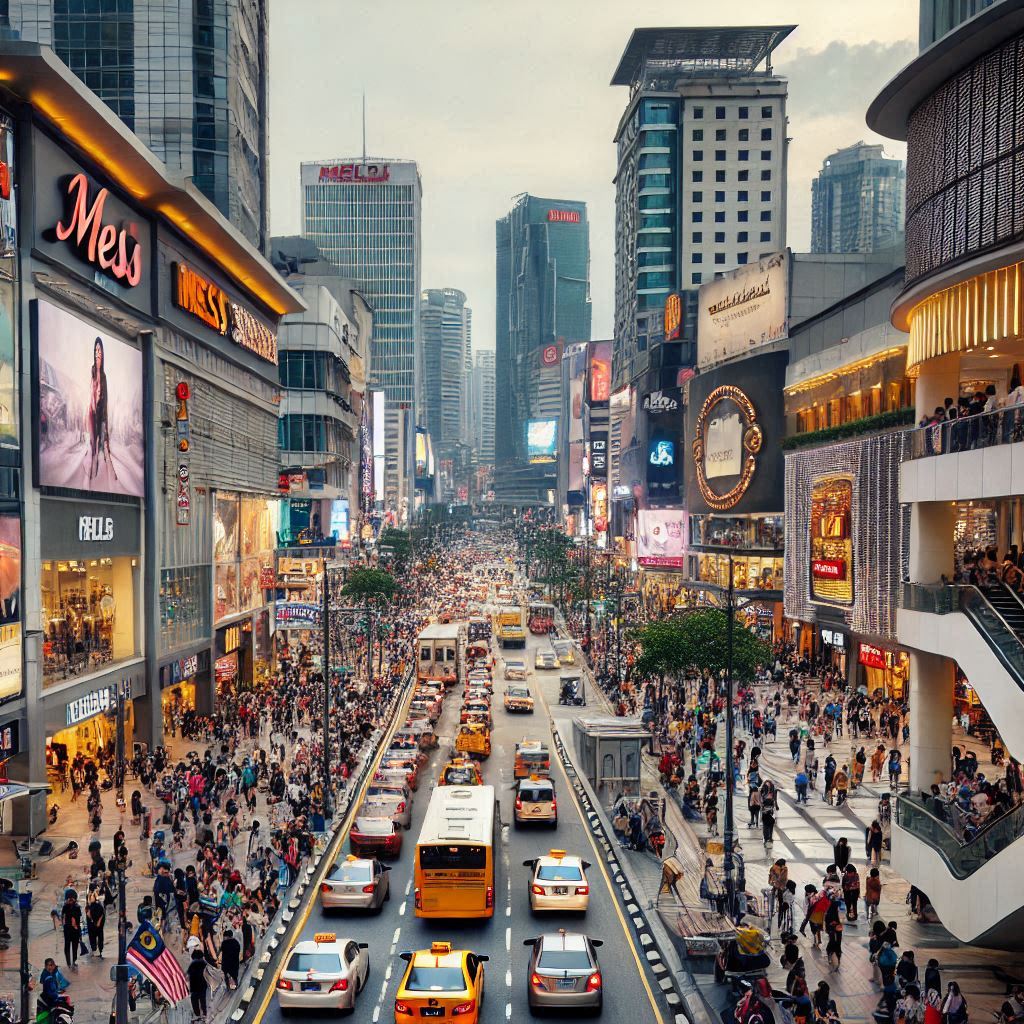
Image courtesy of Microsoft Copilot
by Dr Rahim Said
Turning Bukit Bintang into a pedestrian-only zone is an idea that’s been floated for years — and for good reason. If you’ve ever braved the area’s relentless traffic, you’ll understand why this proposal keeps gaining traction.
According to KL Police Chief Datuk Rusdi Mohd Isa, much of the congestion is caused by a combination of outdated infrastructure and poor user behaviour. Illegal parking, careless e-hailing drop-offs, and the sheer draw of street activities create a perfect storm of gridlock.
The benefits of a pedestrian-only Bukit Bintang are hard to ignore. Imagine a safer, cleaner, and more vibrant space where locals and tourists can explore freely. It would enhance the shopping and entertainment experience while significantly reducing noise and air pollution. The transformation could rival some of the world’s most iconic urban spaces.
Take a cue from cities like Shanghai, where The Bund was revitalised by creating pedestrian-friendly areas. Similarly, Melbourne’s Bourke Street and Singapore’s Orchard Road are shining examples of how pedestrianising busy streets can breathe new life into a city.
These spaces didn’t just improve the experience for visitors — they boosted local businesses and became cultural landmarks.
But as Datuk Rusdi emphasised, this isn’t as simple as closing off a road and calling it a day. Issues like parking, accessibility for residents and businesses, and potential economic disruptions must be addressed. A phased trial, with community feedback, could help Kuala Lumpur learn what works and what doesn’t.
One thing is clear: a lot of the traffic chaos in Bukit Bintang is caused by user behaviour. Reckless parking and inconsiderate drivers worsen the congestion, highlighting the need for stricter enforcement and penalties. Education campaigns and robust management systems would be crucial for any pedestrianization plan to succeed.
Bukit Bintang is already a must-visit spot in Kuala Lumpur, but transforming it into a pedestrian zone could elevate it to the status of global icons like Times Square or the Champs-Élysées.
With the right planning, community involvement, and a commitment to putting people over cars, Kuala Lumpur could reimagine Bukit Bintang as a world-class destination.
Isn’t it time we dared to dream?
WE